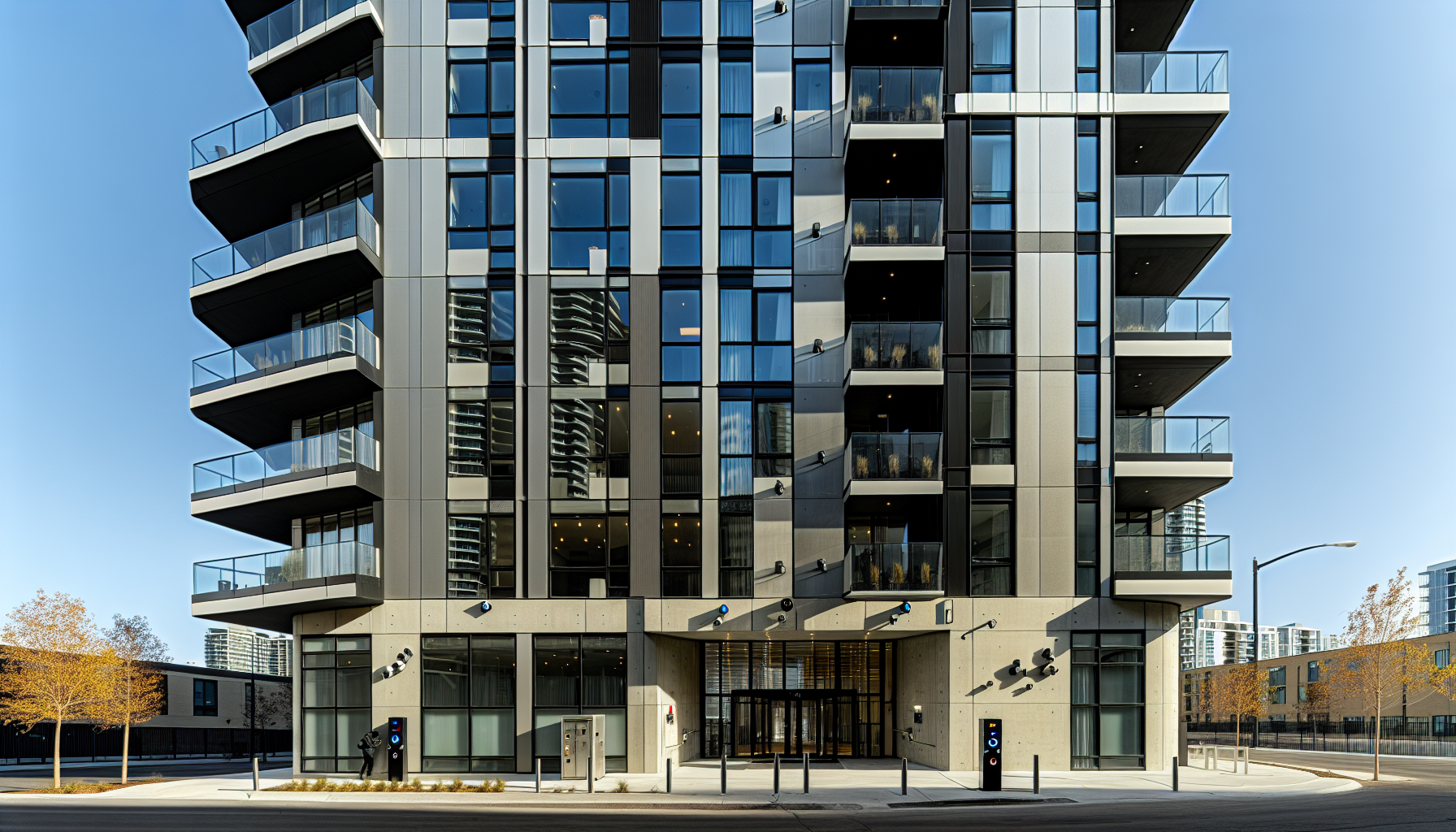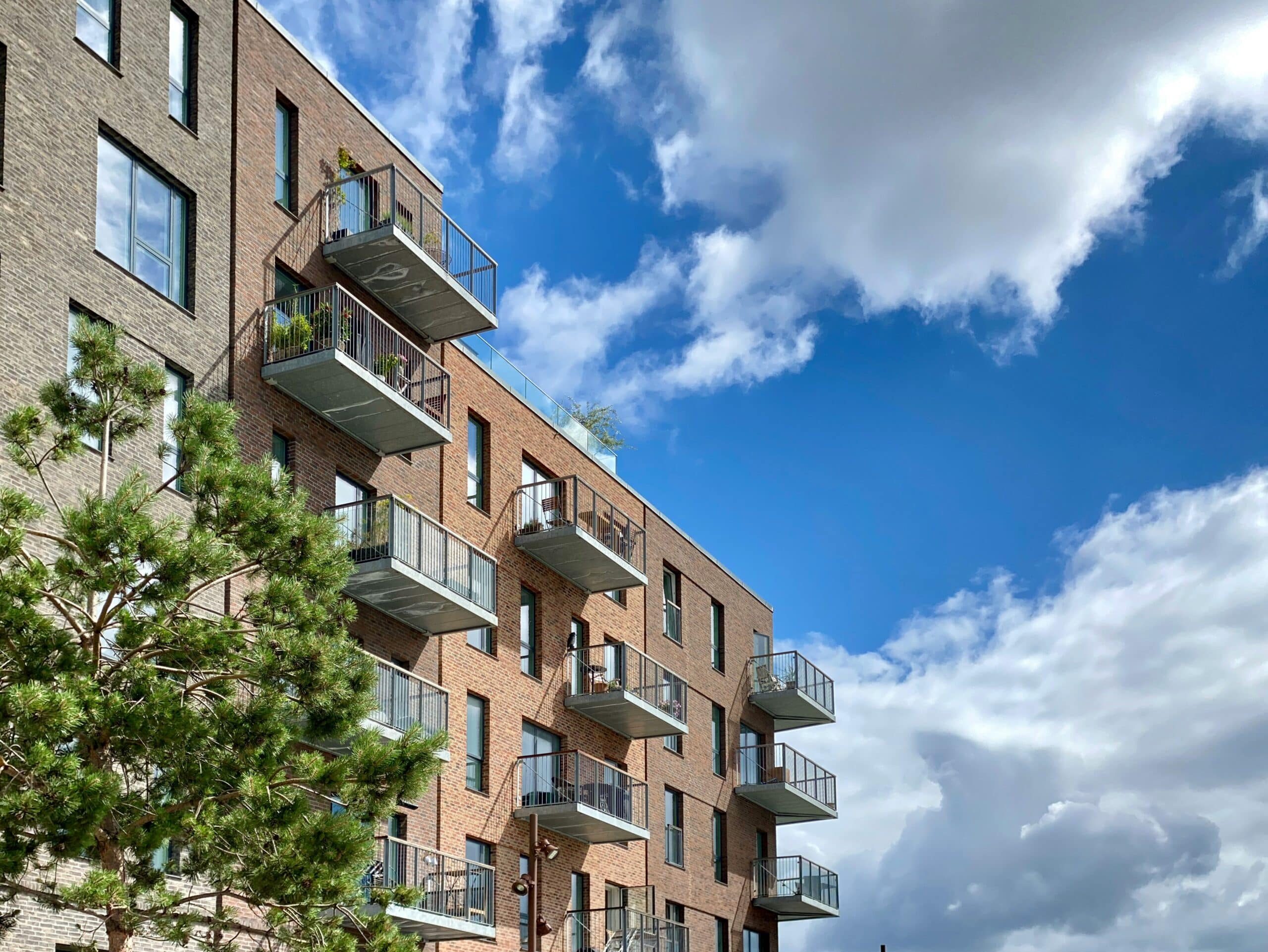Wondering what is a remote doorman? It’s a tech-driven service that manages access to your building without needing someone on-site. This guide explains the system’s operation, its benefits, and how it compares to traditional options.
Key Takeaways
- A Remote Doorman, or virtual concierge, is a digital security and access control service that replaces traditional on-site doorman services, providing cost savings, enhanced security, and 24/7 coverage.
- Remote Doorman systems integrate with advanced technologies including video intercoms and mobile apps, enabling convenient management of visitor access, package reception, and providing seamless integration with other smart building technologies.
- Choosing the right Remote Doorman service requires assessment of a building’s specific needs and the selection of customizable service options that address access control, security, and convenience for residents and property managers.
Exploring the Basics of Remote Doorman Services
Remote doorman service, as implied by its name, is a digital tool for managing property access for visitors, delivery personnel, and at times, residents. It features a video interconnect at the property’s entry point, monitored by a group of operators located off-site.
The main responsibilities of a remote doorman include:
- Managing and controlling a building’s front door
- Managing visitor access
- Monitoring video surveillance
- Managing amenities
- Facilitating resident needs
- Performing other security-related tasks
Defining a Remote Doorman
Also referred to as a virtual concierge, a remote doorman offers continuous property access, guest greeting and verification, and package management, eliminating the need for an on site doorman or concierge on-site. With virtual doorman services, property owners can enjoy the benefits of a traditional doorman without the added cost and hassle.
This service is frequently utilized by a range of properties, including residential buildings, commercial establishments, and gated communities, to address their unique security and access control requirements.
The Technology Behind Remote Doorman Services
The technical foundation of remote doorman services encompasses Virtual Doorman, telephone entry systems, and video interconnect systems. Video intercom systems establish a video connection between the property entrance and remote operators, enabling visual verification and communication with visitors, and allowing access to be granted as necessary.
Surveillance cameras play a vital role in:
- Monitoring the premises
- Providing real-time video feeds to remote operators
- Ensuring continuous oversight
- Enhancing security of the building
How Remote Doorman Differs from Traditional Doorman Services
Differing from traditional doorman services, remote doorman systems provide uninterrupted coverage, ensuring continuous property surveillance, thereby significantly increasing the security and convenience for residents. Furthermore, buildings that choose remote doorman services can anticipate a cost savings of approximately 90% compared to employing a traditional doorman, leading to substantial financial benefits for property owners.
Moreover, remote doorman services integrate with smart building technologies through the use of advanced technologies, providing a seamless integration with other smart building technologies.
The Inner Workings of a Virtual Doorman System
A virtual doorman system operates by:
- Managing visitors, deliveries, and building access
- Using visitor verification, package reception, and remote command center operations
- The off-site operator visually and verbally confirming the visitor’s identity before allowing them access to the property.
Package reception is managed by alerting residents upon package arrival and delivery verification is conducted by confirming the identity of the delivery person.
Visitor Management and Access Control
Visitor management and access control are pivotal components of a virtual doorman system. The access control system verifies visitor identity by utilizing an off-site operator to visually and verbally confirm the visitor’s identity before granting access to the property.
The use of a smart video intercom system facilitates access for residents and their visitors when doors are secured, enhancing convenience and security.
Package Reception and Security
In a virtual doorman system, package reception is managed by alerting residents upon package arrival and delivery verification is conducted by confirming the identity of the delivery person.
Packages are stored in a secure area monitored by cameras to ensure their safety.
Command Center Operations
The responsibilities of a remote doorman encompass the management and supervision of a building’s entrance, visitor entry, video monitoring, facilities, resident assistance, and various other responsibilities from a remote location during command center operations. These systems typically encompass monitoring access control card and fob usage, and may incorporate secured gates, doors, or barriers that necessitate authenticated entry, such as with RFID access cards.
Advantages of Implementing a Remote Doorman Solution
The adoption of a remote doorman solution presents several benefits including:
- Cost-effectiveness
- Time efficiency
- Improved security
- Round-the-clock coverage
Buildings that choose remote doorman services can anticipate a cost savings of approximately 90% compared to employing a traditional doorman, leading to substantial financial benefits for property owners.
The service provides round-the-clock access to the property, facilitates successful package deliveries, and streamlines the courier process.
Cost-Effectiveness and Time Savings
The cost savings of implementing a remote doorman solution are substantial. The typical annual cost of employing a traditional 24-hour doorman is $262,000, whereas remote doorman services can vary from $100 to $3,000 per month, excluding any supplementary one-time installation expenses.
Additionally, remote doorman services provide efficiency benefits by minimizing the requirement for property managers and tenants to be physically present for security and access management.
Enhanced Security and 24/7 Coverage

Remote doorman services offer improved security in comparison to traditional doorman services through the utilization of advanced technology and monitoring systems. They provide 24/7 coverage by granting access to the property at all times, facilitating successful package deliveries, and streamlining the courier process.
Integration with Smart Building Technologies
Integration of remote doorman systems with smart building technologies creates a seamless and convenient experience for tenants and property managers. The integration of remote doorman systems with smart building technologies involves the use of video intercom systems for visitor vetting and property access management.
Mobile apps play a significant role in enhancing the user experience of remote doorman systems.
The Role of Mobile Apps in Remote Doorman Services
In remote doorman services, mobile apps offer numerous functionalities, such as providing residents with the ability to control access and track deliveries through a web portal, integrating hardware and software for building security, enabling continuous monitoring by offsite operators, and integrating security camera features. They improve the user experience by offering convenient, on-the-go access to a variety of doorman services, centralized management of service aspects, and secure building access using mobile devices.
Interactive Web Portal for Tenants and Property Managers
The interactive web portal for remote doorman services is a web-based information management system that facilitates interaction between tenants, property managers, and Virtual Doorman through secure remote access.
Tenants have the ability to schedule deliveries through a remote doorman web portal by utilizing the interactive web platform offered by Virtual Doorman, a virtual doorman solution.
Choosing the Right Remote Doorman Service for Your Property
The selection of the most suitable remote doorman service for your property requires an evaluation of the building’s needs and consideration of service options and customization. It is crucial to take into account factors such as:
- Access control
- Building security
- Life-safety
- Emergency egress
- Loss prevention
when evaluating a building’s requirements for a remote doorman service.
The various options for remote doorman services include virtual doorman, telephone entry systems, and smart video intercom systems.
Service Options and Customization
Remote doorman services offer tailored solutions to accommodate the specific needs of residential and commercial settings. Premium remote doorman packages often encompass a diverse range of services, including:
- Accepting diverse deliveries
- Furnishing a dedicated web portal account for each apartment
- Issuing email notifications to residents
- Providing resident lock-out protection
- Establishing communication channels with a command center.
Assessing Your Building’s Needs
Assessing your building’s needs is a crucial step in choosing the right remote doorman service. It is essential to understand the intended level of security as it plays a key role in determining the efficacy of a virtual doorman in safeguarding the building and its occupants.
Furthermore, resident demand has a substantial influence on the necessity of a virtual doorman service, as it has the potential to elevate property values and serve as an appealing feature for potential new residents.
Common Concerns and Solutions with Remote Doorman Systems
As with any technology-centric system, remote doorman systems could encounter technical difficulties. Typical issues include the potential for system failure, privacy concerns, and susceptibility to prolonged power outages or Internet disruptions.
Troubleshooting issues with remote doorman systems may involve:
- Checking the batteries in the remote
- Ensuring proper programming or syncing of the remote with the system
- Checking for obstructions or interference that might affect the signal.
Technical Challenges and Troubleshooting
Technical challenges in remote doorman systems include:
- Risk of system failure
- Privacy concerns
- Inefficiency of artificial intelligence
- Spotty internet connection
- Video conferencing audio issues
- Slow computer performance
- Email syncing problems
- VPN connection drops
Ensuring Reliable Internet Connectivity
Maintaining a reliable internet connection is vital for the seamless operation of remote doorman systems. A stable internet connection guarantees swift and dependable communication, essential for effective access control and monitoring operations.
To guarantee dependable internet connectivity for remote doorman systems, it is recommended to invest in a dependable wireless router and utilize a wireless headset for a clear internet connection.
Summary
In conclusion, remote doorman services offer a cost-effective and technologically advanced alternative to traditional doorman services. They provide 24/7 coverage, enhanced security, and seamless integration with smart building technologies. Whether you’re a property manager looking for a cost-effective solution or a tenant seeking convenience and enhanced security, remote doorman services offer a viable solution.
Frequently Asked Questions
What does a virtual doorman do?
A virtual doorman integrates a touch screen video intercom, digital CCTV, and access control to remotely grant access for visitors, deliveries, vendors, and residents in a building.
How much does a virtual doorman cost?
The cost of a virtual doorman can vary based on the package you choose, ranging between $500 and $2500 per month, with additional installation costs to consider.
What does doorman do?
A doorman is responsible for providing security and offering courtesy services such as opening doors, screening visitors, and accepting packages at residential buildings or entertainment venues. They may also assist with carrying luggage and hailing taxis for residents and guests.
What is the difference between a doorman and a concierge?
The main difference between a doorman and a concierge is that a doorman primarily assists with opening doors and providing security, while a concierge offers guidance on local services and amenities.
What is a remote doorman service?
A remote doorman service is a virtual solution that manages property access for visitors, delivery personnel, and sometimes residents. It provides 24/7 access to the property, greeting and verifying guests and managing packages, eliminating the need for an on-site doorman or concierge.
